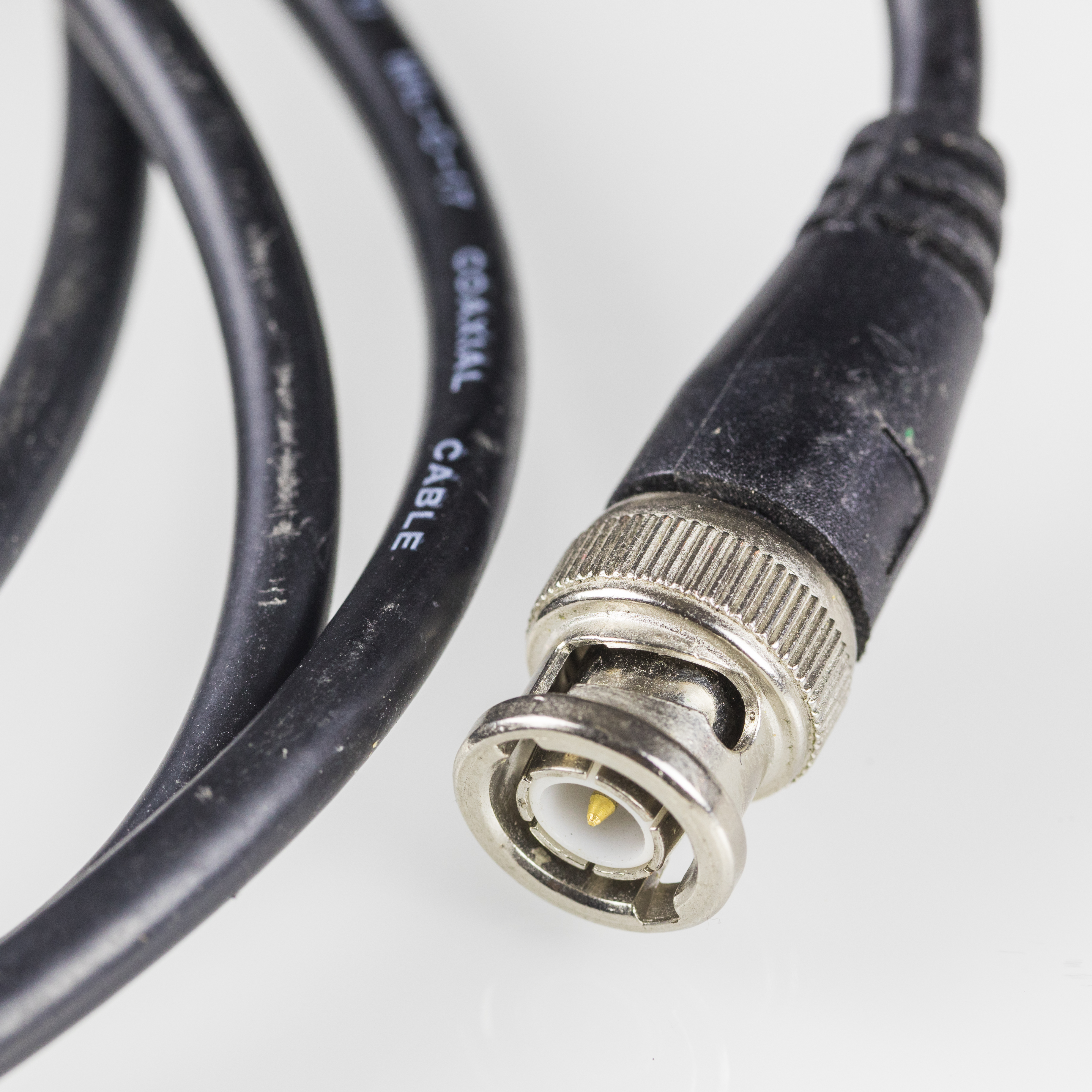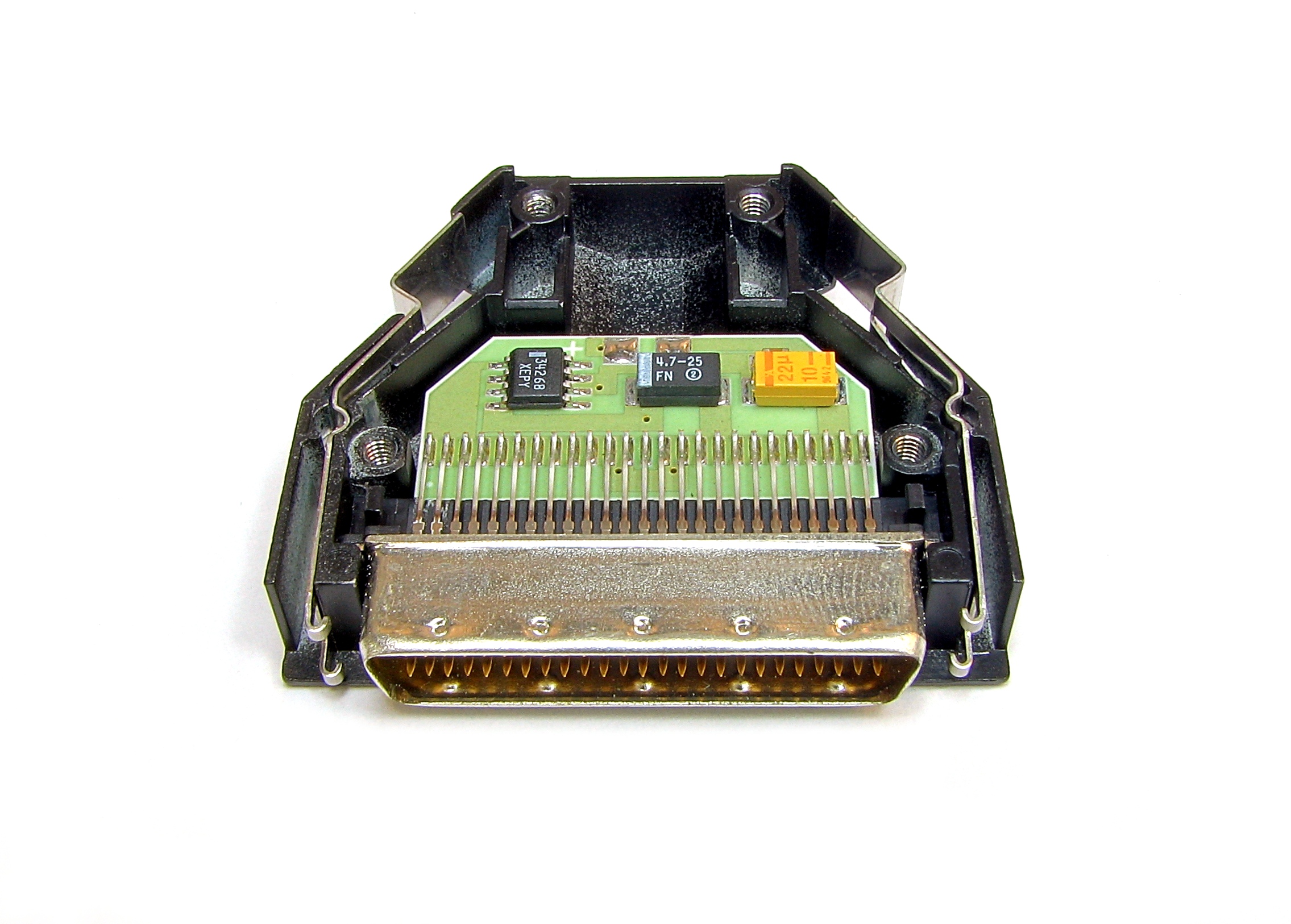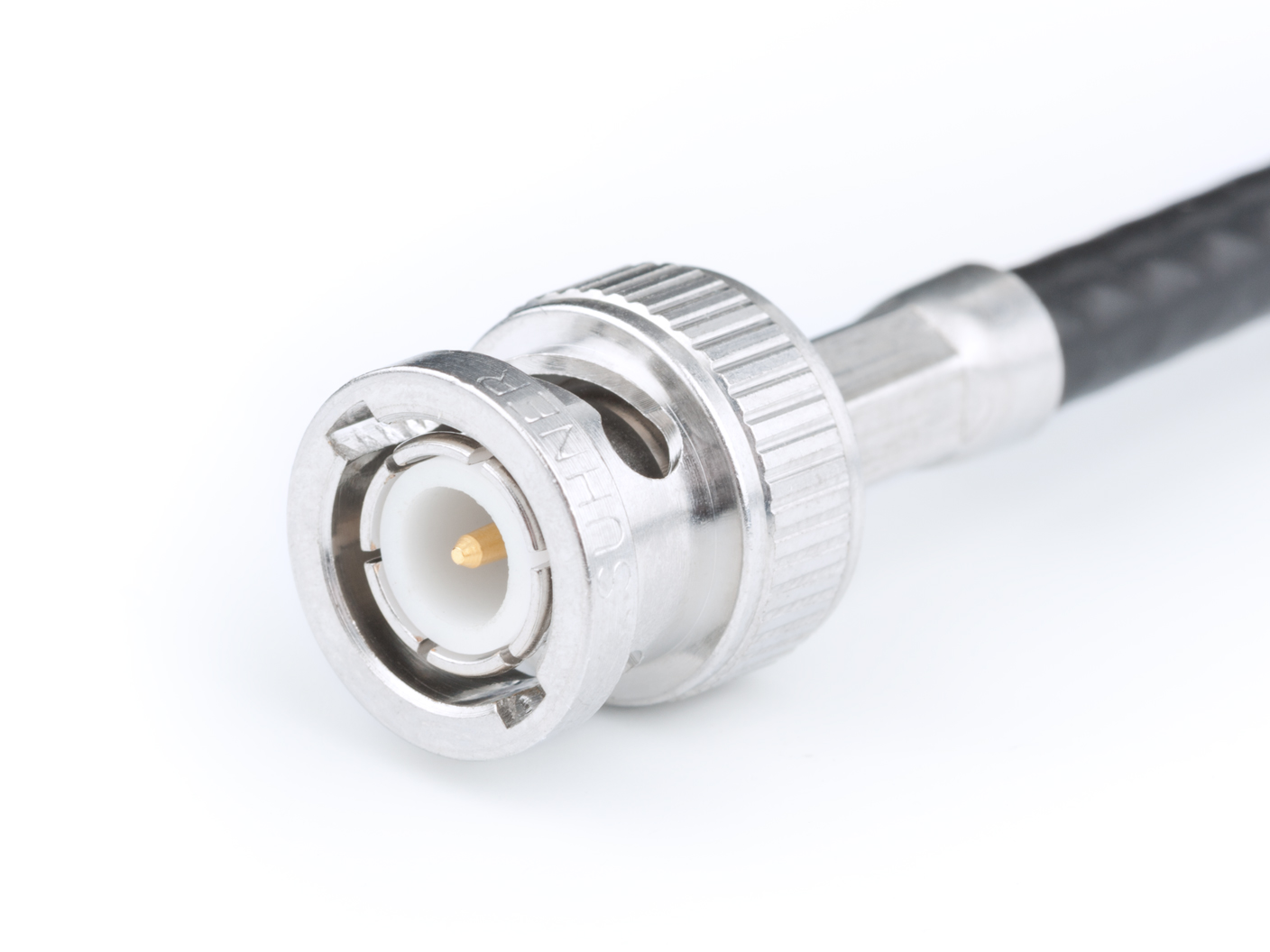|
10base2
10BASE2 (also known as cheapernet, thin Ethernet, thinnet, and thinwire) is a variant of Ethernet that uses thin coaxial cable terminated with BNC connectors to build a local area network. During the mid to late 1980s, this was the dominant Ethernet standard. The use of twisted pair networks competed with 10BASE2's use of a single coaxial cable. In 1988, Ethernet over twisted pair was introduced, running at the same speed of 10 Mbit/s. In 1995, the Fast Ethernet standard upgraded the speed to 100 Mbit/s, and no such speed improvement was ever made for thinnet. By 2001, prices for Fast Ethernet cards had fallen to under $50. By 2003, Wi-Fi networking equipment was widely available and affordable. Due to the immense demand for high-speed networking, the low cost of Category 5 cable, and the popularity of 802.11 wireless networks, both 10BASE2 and 10BASE5 have become increasingly obsolete, though devices still exist in some locations. As of 2011, IEEE 802.3 has ... [...More Info...] [...Related Items...] OR: [Wikipedia] [Google] [Baidu] |
Electrical Termination
In electronics, electrical termination is the practice of ending a transmission line with a device that matches the characteristic impedance of the line. Termination prevents signals from Signal reflection, reflecting off the end of the transmission line. Reflections at the ends of unterminated transmission lines cause distortion, which can produce ambiguous digital signal levels and misoperation of digital systems. Reflections in analog signal systems cause such effects as ghosting (television), video ghosting, or Power margin, power loss in radio transmitter transmission lines. Transmission lines Signal termination often requires the installation of a terminator at the beginning and end of a wire or cable to prevent an RF signal from being reflected back from each end, causing Interference (communication), interference, or power loss. The terminator is usually placed at the end of a transmission line or Daisy chain (electrical engineering), daisy chain Bus (computing), bus (s ... [...More Info...] [...Related Items...] OR: [Wikipedia] [Google] [Baidu] |
BNC Connector
The BNC connector is a miniature quick-connect/disconnect RF connector, radio-frequency connector for coaxial cable. It was introduced on military radio equipment in the 1940s, and has since become widely used in radio systems and as a common type of video connector. It has a twist-to-lock design, where two lugs on the Gender of connectors and fasteners, female connector engage slots in the shell of the Gender of connectors and fasteners, male one. BNC is designed to maintain the characteristic impedance of the cable across the connection, and is made in 50-ohm and 75-ohm versions. It is normally used for radio-frequency signals up to about 2 gigahertz and 500 volts. Similar radio-frequency connectors differ in dimensions and attachment features, and may allow for higher voltages, higher frequencies, or three-wire connections. History In 1941, the US Navy used a smaller version of the threaded N connector, the Type BN (Baby N), as the UG-85/U, UG-86/U, UG-114/U and UG- ... [...More Info...] [...Related Items...] OR: [Wikipedia] [Google] [Baidu] |
BNC Connector With 10BASE2 Cable-92170
BNC may refer to: Science and technology * Binucleated cells * BNC connector (Bayonet Neill–Concelman), a type of RF coaxial cable jack * BNC (software), (abbreviation of ''Bounced Network Connection'') an IRC program functioning as a proxy between an IRC client and a type of computer network proxy redirector * Biological, Nuclear, Chemical, types of weapons of mass destruction Businesses and organizations * Black News Channel, a cable news and current affairs channel in Tallahassee, Florida, US * Ballet Nouveau Colorado, a contemporary ballet company based in Broomfield, Colorado, US * BNC Bank, also called Bank of North Carolina, a former bank based in High Point, North Carolina, US * '' Banque Nationale du Canada'' or National Bank of Canada * Berkeley Nucleonics Corporation, a US manufacturer of precision electronic instrumentation * Bernama News Channel, a news and current affairs channel in Malaysia, formerly known as Bernama TV * Bethany Nazarene College, the former n ... [...More Info...] [...Related Items...] OR: [Wikipedia] [Google] [Baidu] |
Deprecated
Deprecation is the discouragement of use of something human-made, such as a term, feature, design, or practice. Typically something is deprecated because it is claimed to be inferior compared to other options available. Something may be deprecated when it cannot be controlled, such as a term. Even when it can be controlled, something may be deprecated even when it might be useful for example, to ensure compatibility and it may be removed or discontinued at some time after being deprecated. Etymology In general English usage, the verb "to deprecate" means "to express disapproval of (something)". It derives from the Latin deponent verb ''deprecari'', meaning "to ward off (a disaster) by prayer". An early documented usage of "deprecate" in this sense is in Usenet posts in 1984, referring to obsolete features in 4.2BSD and the C programming language. An expanded definition of "deprecate" was cited in the Jargon File in its 1991 revision, and similar definitions are found in ... [...More Info...] [...Related Items...] OR: [Wikipedia] [Google] [Baidu] |
10BASE-T
1 (one, unit, unity) is a number, numeral, and glyph. It is the first and smallest positive integer of the infinite sequence of natural numbers. This fundamental property has led to its unique uses in other fields, ranging from science to sports, where it commonly denotes the first, leading, or top thing in a group. 1 is the unit of counting or measurement, a determiner for singular nouns, and a gender-neutral pronoun. Historically, the representation of 1 evolved from ancient Sumerian and Babylonian symbols to the modern Arabic numeral. In mathematics, 1 is the multiplicative identity, meaning that any number multiplied by 1 equals the same number. 1 is by convention not considered a prime number. In digital technology, 1 represents the "on" state in binary code, the foundation of computing. Philosophically, 1 symbolizes the ultimate reality or source of existence in various traditions. In mathematics The number 1 is the first natural number after 0. Each natural numbe ... [...More Info...] [...Related Items...] OR: [Wikipedia] [Google] [Baidu] |
Ground Loop (electricity)
In an electrical system, a ground loop or earth loop occurs when two points of a circuit are intended to have the same ground reference potential but instead have a different potential between them. This is typically caused when enough current is flowing in the connection between the two ground points to produce a voltage drop and cause the two points to be at different potentials. Current may be produced in a ground loop by electromagnetic induction. Ground loops are a major cause of noise, hum, and interference in audio, video, and computer systems. Wiring practices that protect against ground loops include ensuring that all vulnerable signal circuits are referenced to one point as ground. The use of differential signaling can provide rejection of ground-induced interference. The removal of ground connections to equipment in an effort to eliminate ground loops will also eliminate the protection the safety ground connection is intended to provide. Description A ground l ... [...More Info...] [...Related Items...] OR: [Wikipedia] [Google] [Baidu] |
Ground (electricity)
In electrical engineering, ground or earth may be a reference point in an electrical circuit from which voltages are measured, a common return path for electric current, or a direct physical connection to the Earth. Electrical circuits may be connected to ground for several reasons. Exposed conductive parts of electrical equipment are connected to ground to protect users from electrical shock hazards. If internal insulation fails, dangerous voltages may appear on the exposed conductive parts. Connecting exposed conductive parts to a "ground" wire which provides a low-impedance path for current to flow back to the incoming neutral (which is also connected to ground, close to the point of entry) will allow circuit breakers (or RCDs) to interrupt power supply in the event of a fault. In electric power distribution systems, a protective earth (PE) conductor is an essential part of the safety provided by the earthing system. Connection to ground also limits the build-up of static ... [...More Info...] [...Related Items...] OR: [Wikipedia] [Google] [Baidu] |
Alternating Current
Alternating current (AC) is an electric current that periodically reverses direction and changes its magnitude continuously with time, in contrast to direct current (DC), which flows only in one direction. Alternating current is the form in which electric power is delivered to businesses and residences, and it is the form of electrical energy that consumers typically use when they plug kitchen appliances, televisions, Fan (machine), fans and electric lamps into a wall socket. The abbreviations ''AC'' and ''DC'' are often used to mean simply ''alternating'' and ''direct'', respectively, as when they modify ''Electric current, current'' or ''voltage''. The usual waveform of alternating current in most electric power circuits is a sine wave, whose positive half-period corresponds with positive direction of the current and vice versa (the full period is called a ''wave cycle, cycle''). "Alternating current" most commonly refers to power distribution, but a wide range of other appl ... [...More Info...] [...Related Items...] OR: [Wikipedia] [Google] [Baidu] |
Resistor
A resistor is a passive two-terminal electronic component that implements electrical resistance as a circuit element. In electronic circuits, resistors are used to reduce current flow, adjust signal levels, to divide voltages, bias active elements, and terminate transmission lines, among other uses. High-power resistors that can dissipate many watts of electrical power as heat may be used as part of motor controls, in power distribution systems, or as test loads for generators. Fixed resistors have resistances that only change slightly with temperature, time or operating voltage. Variable resistors can be used to adjust circuit elements (such as a volume control or a lamp dimmer), or as sensing devices for heat, light, humidity, force, or chemical activity. Resistors are common elements of electrical networks and electronic circuits and are ubiquitous in electronic equipment. Practical resistors as discrete components can be composed of various compounds and forms. Resisto ... [...More Info...] [...Related Items...] OR: [Wikipedia] [Google] [Baidu] |
Transmission Line
In electrical engineering, a transmission line is a specialized cable or other structure designed to conduct electromagnetic waves in a contained manner. The term applies when the conductors are long enough that the wave nature of the transmission must be taken into account. This applies especially to radio-frequency engineering because the short wavelengths mean that wave phenomena arise over very short distances (this can be as short as millimetres depending on frequency). However, the Telegrapher's equations, theory of transmission lines was historically developed to explain phenomena on very long electrical telegraph, telegraph lines, especially submarine telegraph cables. Transmission lines are used for purposes such as connecting Transmitter, radio transmitters and Radio receiver, receivers with their antenna (radio), antennas (they are then called feed lines or feeders), distributing cable television signals, trunking, trunklines routing calls between telephone switchi ... [...More Info...] [...Related Items...] OR: [Wikipedia] [Google] [Baidu] |
EAD Socket
EAD (German: ''Ethernet-Anschlussdose'') is an obsolete connection standard for network plugs and sockets used in the early 1990s. Ethernet networking of this period (mid 1980s to mid 1990s) used "thin coax" or 10BASE2. All devices on a network segment connected to the same electrical section of RG-58 coaxial cable. Intermediate devices were connected via a T piece. The two ends of the segment were terminated with a resistive network terminator. Although these networks were reliable when connected, they were prone to accidental misconnection by non-technical office staff. This was particularly an issue when devices, such as desktop computers, were being added or removed from the network. Although a rare need at this time, the situation was even worse for portable laptops. To avoid some of the drawbacks with 10BASE2 over BNC connectors, the EAD socket was one of several alternatives developed to give an "office friendly" network connector that could easily be connected and disc ... [...More Info...] [...Related Items...] OR: [Wikipedia] [Google] [Baidu] |
T-connector
A tee connector is an electrical connector that connects three cables together. It is usually in the shape of a capital T. It is usually used for coax cables and the three connector points can be either female or male gender, and could be different or the same standard, such as F type, BNC or N type. Tee connectors can be used to split radio frequency power from a cable into two. They can be used to attach a piece of electronic test equipment. Tee connectors were used to attach end stations to 10BASE2 Ethernet Ethernet ( ) is a family of wired computer networking technologies commonly used in local area networks (LAN), metropolitan area networks (MAN) and wide area networks (WAN). It was commercially introduced in 1980 and first standardized in 198 ... networks. References RF connectors {{electronics-stub ... [...More Info...] [...Related Items...] OR: [Wikipedia] [Google] [Baidu] |







